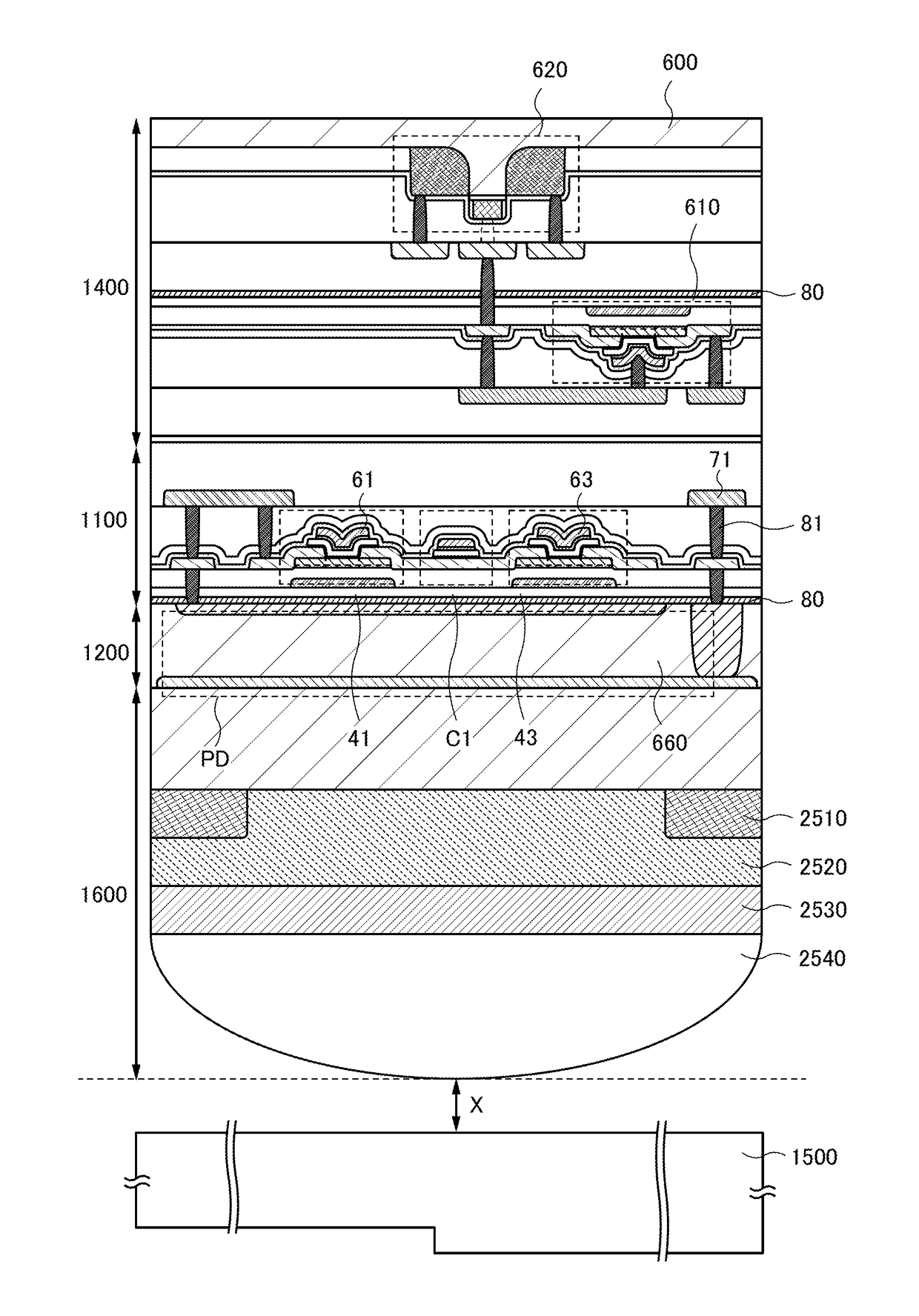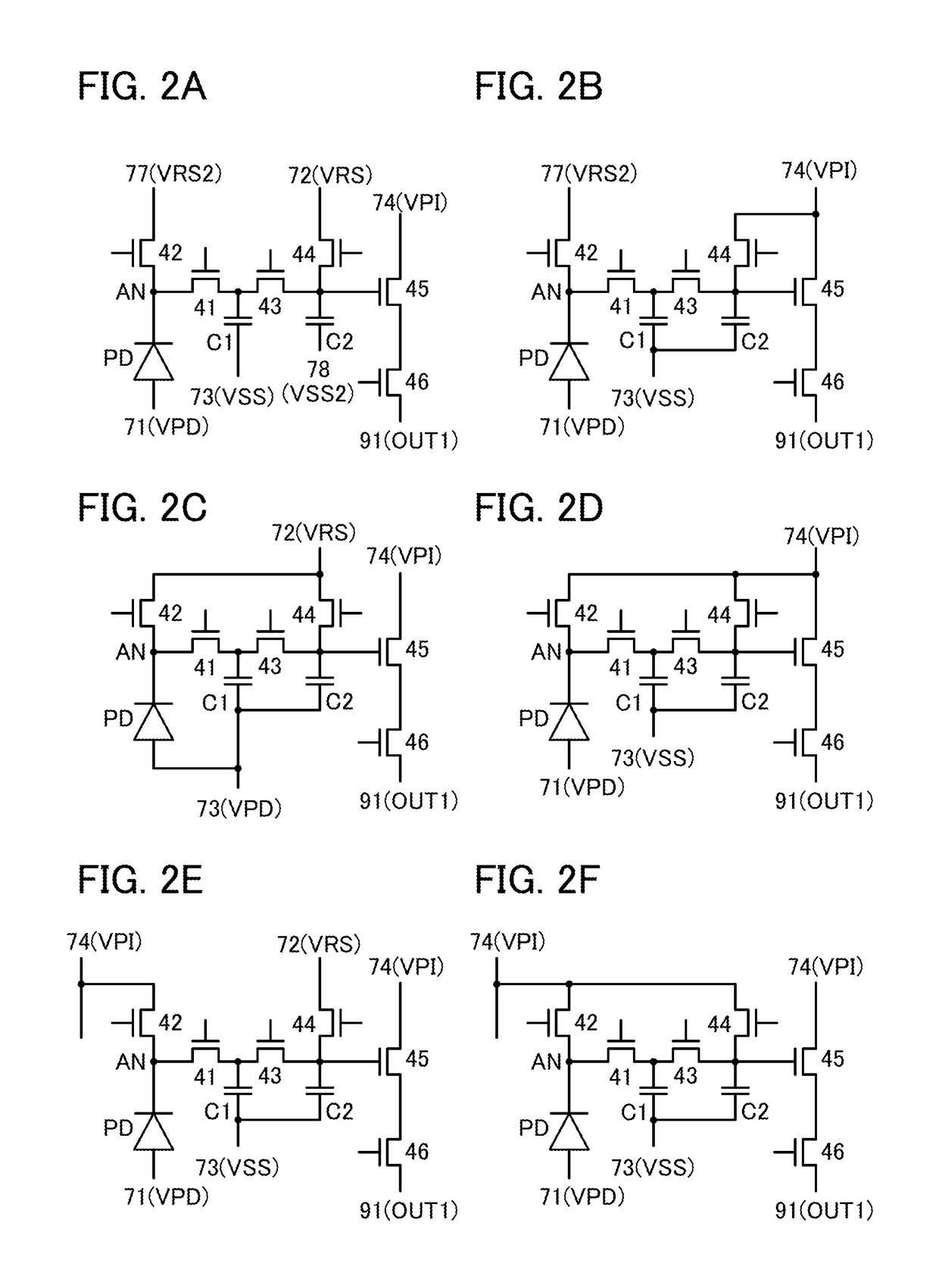Imaging device, module, electronic device, and method of operating the imaging device
a technology of imaging device and charge retention portion, which is applied in the direction of radio frequency controlled devices, transistors, television systems, etc., can solve the problems of difficult circuit structure and long time-consuming, and achieve the effect of low noise, high resolution and high-integration imaging devices
- Summary
- Abstract
- Description
- Claims
- Application Information
AI Technical Summary
Benefits of technology
Problems solved by technology
Method used
Image
Examples
embodiment 1
[0100]In this embodiment, an imaging device that is one embodiment of the present invention is described with reference to drawings.
[0101]One embodiment of the present invention relates to an imaging device that has a circuit structure where a transistor that resets the potential of a charge detection portion, a transistor that outputs a signal corresponding to the potential of the charge detection portion, and a transistor that selects a pixel are used in common by a plurality of pixels and that is capable of imaging with a global shutter system, and a method for driving the imaging device. In the imaging device, imaging data can be obtained in an n-th frame (n is a natural number of 1 or more) and the imaging data can be read in an (n+1)th frame.
[0102]The number of transistors per pixel can be reduced, so that the pixel area can be reduced. In other words, pixels can be highly integrated. Since the imaging data is read in the (n+1)th frame, imaging time in the n-th frame can be ma...
embodiment 2
[0240]In this embodiment, a transistor including an oxide semiconductor that can be used in one embodiment of the present invention is described with reference to drawings. In the drawings in this embodiment, some components are enlarged, reduced in size, or omitted for easy understanding.
[0241]FIGS. 36A and 36B are a top view and a cross-sectional view illustrating a transistor 101 in one embodiment of the present invention. FIG. 36A is a top view, and a cross section in the direction of dashed-dotted line B1-B2 in FIG. 36A is illustrated in FIG. 36B. A cross section in the direction of dashed-dotted line B3-B4 in FIG. 36A is illustrated in FIG. 38A. The direction of dashed-dotted line B1-B2 is referred to as a channel length direction, and the direction of dashed-dotted line B3-B4 is referred to as a channel width direction.
[0242]The transistor 101 includes an insulating layer 120 in contact with a substrate 115; an oxide semiconductor layer 130 in contact with the insulating laye...
embodiment 3
[0305]In this embodiment, components of the transistors described in Embodiment 2 are described in detail.
[0306]As the substrate 115, a glass substrate, a quartz substrate, a semiconductor substrate, a ceramic substrate, a metal substrate having a surface subjected to insulation treatment, or the like can be used. The substrate 115 can be a silicon substrate provided with a transistor and / or a photodiode; and an insulating layer, a wiring, a conductor functioning as a contact plug, and the like that are provided over the silicon substrate. Note that when p-channel transistors are formed using the silicon substrate, a silicon substrate with n−-type conductivity is preferably used. Alternatively, an SOI substrate including an n−-type or i-type silicon layer may be used. In the case where a p-channel transistor is formed using the silicon substrate, a surface of the silicon substrate where the transistor is formed preferably has a (110) plane orientation. Forming a p-channel transistor...
PUM
 Login to View More
Login to View More Abstract
Description
Claims
Application Information
 Login to View More
Login to View More - R&D
- Intellectual Property
- Life Sciences
- Materials
- Tech Scout
- Unparalleled Data Quality
- Higher Quality Content
- 60% Fewer Hallucinations
Browse by: Latest US Patents, China's latest patents, Technical Efficacy Thesaurus, Application Domain, Technology Topic, Popular Technical Reports.
© 2025 PatSnap. All rights reserved.Legal|Privacy policy|Modern Slavery Act Transparency Statement|Sitemap|About US| Contact US: help@patsnap.com



